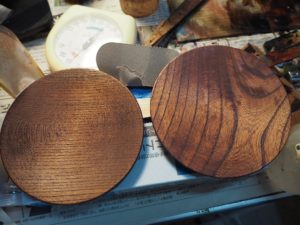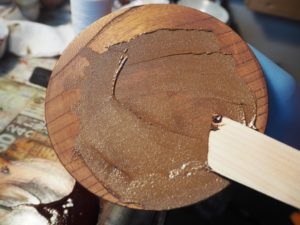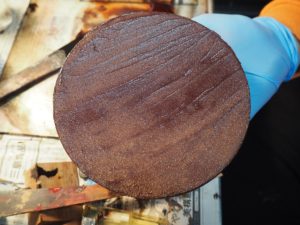With much of my fall work behind me, it is time to get back to woodworking. Before winter sets in, I want to get as many pieces into the final stages of the finishing. This is reflection from last year when I spent many a cold day wet sanding in the outside sink. This year, I would much prefer to be engraving or carving in front of the wood stove.
With that in mind, I sorted through the plates after the first coat of urushi. This is usually when they look their worst and is a good indicator of how I am progressing as a woodworker and also how much time I can expect to spend getting them up to par. In this case of these plates, I have already decided to split them about half and half.

As you can see in the picture, the ones that look like the plate on the left will be set aside for filling the grain with gold/silver. The other ones that would usually take a lot more sanding to make them look good will become lacquerware that I plan to engrave in most likely the chinkin style. One of the factors I used when making my decision was the tightness of the grain. The plate on the left came from a much slower growing tree, which means there are more growth rings. Because the silver/gold can only be inlaid into the early growth, the more or larger the growth rings, the more dramatic the finished look will be. Although the plate on the right has interesting grain, it is not really the right choice for filling the grain.
After sorting the plates, I went ahead with the first step towards finishing the plates that will become lacquerware. This involves coating the plates with a clay-urushi layer. To me, this is the point at which these pieces cease to be woodwork and become lacquerware. A mixture of clay powder and usrushi is applied in a relatively thick layer over the wood. This process will be continued several most times using successively finer clay powder to create what will hopefully be a completely smooth surface.


It is a very simply process that is surprisingly difficult to do in practice. It is quite hard to get a smooth layer without ridges or worse yet, valleys. I will sand between each coat, so it will not be a problem, but I still need a lot more practice.
For me, I usually hesitate to finish pieces in this way. Being a woodworker, I want to show off the wood that I have gone through so much trouble to prepare. All wood grain is so interesting and unique that I find it a shame to “kill” it with this layer of clay. Never again will the wood grain be visible. However, coating the wood in this way makes it so much strong that it otherwise would be. Not only does it help to limit wood movement, but it also improve the urushi coating by providing an intert base on which is it applied. In the past, most of my pieces have just been coated over mildly coated wood. In the final stages, it was possible to see the depressions on the wood grain on the surface of the lacquer. This coating will help prevent.
While it is a difficult decision, I have reached the conclusion that if I am going to coat the piece with black or pigmented lacquer, I should prepare it in the best way possible.
Early next week, I plan on doing the underside and hopefully adding the second layer to the top side.